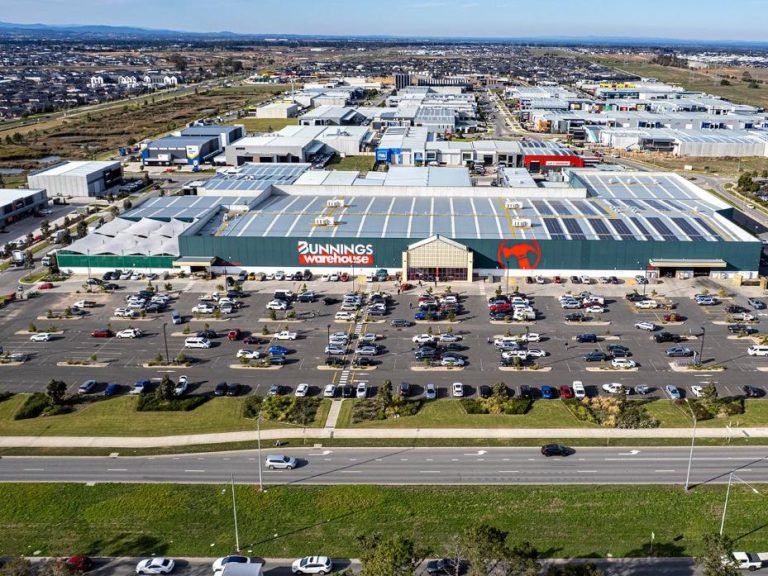Heritage-listed Crown Mills offers unique office space for lease

A unique opportunity exists for a small business to occupy some of the offices in a converted heritage-listed flour mill that once supplied all of Tasmania’s oatmeal.
Launceston’s Crown Mill, the first steam-powered flour mill in Australia to be powered by electricity, has four vacancies at 22 Cameron St following the departure early last year of a long-term tenant.
The four-storey red brick building built in 1897, to architect Walter Conway’s design, is a “fine intact example of a late nineteenth century flour mill”, according to the Tasmanian Heritage Council.
Zoned for urban mixed use, the iconic Victorian building boasts natural light with original features peppered through each floor including exposed brick, wooden beams, millstones and a kiln.
The owners, a Launceston family, plan to tenant all the vacant offices, either individually or en masse, and upgrade the property incrementally, according to Nick Oliver, sales and leasing consultant at NAI Harcourts North.
“It can fit maybe 10 tenancies in there,” he said.
The four advertised leases are a mix of open plan and single offices which span between 42sqm and 148sqm.
Current tenants represent the IT, creative and finance industries.
Plans for a pilates studio on the ground floor have been submitted to Launceston City Council.
Mr Oliver said the Crown Mill was beautiful, and “in a good part of town” between the CBD and Aurora Stadium, with a farmer’s market next door.
The pros and cons of Launceston’s many heritage-listed properties

The property retains many of its original features. Picture: realcommercial.com.au/leased
Heritage-listed properties in Launceston were “popular” among both owners and tenants, he said, especially when renovated “sympathetically”.
“It is great for a business to say: ‘We are at the Crown Mill’ or ‘Baptist Tabernacle’ or ‘C.H Smith Building’,” Mr Oliver said.
But demand depends on the internal re-fit, with heating costs, stair access, and client meetings of importance.
“It comes down to amenity, if heritage buildings have been renovated and updated sympathetically for sure – there is a following. If they are cold and damp with bad access, not so much,” he said.
“Historical properties are great, they’ve got a lot of charm, but the piece that a lot of people look for also, is access,” he said.
Lift access would bolster the mill’s appeal, he said.
“(People) can ‘fall in love’ and pay a higher price than a traditional commercial return because they want to own that asset,” he said.
Crown Mills has struggled to fill up since its anchor-tenant, Foundry, left around March 2020.
“They were there a long time,” Mr Oliver said. “They took up a large portion of the building.”
Foundry, an arts school, ran its Launceston campus in the mill for more than five years before moving to an online study model.
Foundry director Chris Billing said it represented “quintessential Tasmanian architecture” and made Launceston a desirable place to do business.
“People always stop by to photograph the facade as it’s a stunning piece of history,” he said.
CBD office markets shrug off the lockdown blues nationally

The building was converted to office space during the 1970s. Picture: realcommercial.com.au/leased
The long-term nature of the office vacancies at Crown Mills buck the broader office search trend in Australia.
Nationally, year-on-year views per listing for leased office space are up 27%, according to data collated by realcommercial.com.au.
In Tasmania, by comparison year-on-year views per listing are up 44% for office space, according to PropTrack data.
National leasing activity remains robust, with CBD office markets recording the strongest quarterly net absorption result since the fourth quarter of 2018, JLL research found.
The national CBD office market vacancy rate remained at 14% in the third quarter of 2021, JLL found.
Tim O’Connor, JLL’s head of leasing, said a number of industries were in expansion mode.
“The common theme is organisations growing tech-related headcount to improve business processes or evolve their service offering for customers,” he said.
“Actual leasing evidence shows that most organisations are growing headcount and this is translating to a larger organisational footprint.”
Scale of the Crown Mill a sign of past economic prosperity

The beams are a key feature of most of the office space currently available to lease. Picture: realcommercial.com.au/for-lease
The Crown Mill is no stranger to going against the grain.
The mill, which famously produced rolled oats, oatmeal, pearl barley and split peas, was built at a time when mills around the colony were closing down.
Miller Thomas Affleck, and his son, John, ran the business in town near railways and ports after honing their craft regionally.
Business boomed for ‘T. Affleck & Son’, and in 1906, the mill’s steam engine was replaced by a 100-horse-power electric motor.
In 1918, Affleck joined with the Monds milling company to form Monds & Affleck.
The mill closed down in the 1970s upon the nation’s growing preference for boxed breakfast cereal, after surviving the Depression because bread was a staple for even the poorest.
A group of architects bought the mill in 1977, and converted it into office space.
This conversion became a case study on how to create new uses for old buildings, according to the Tasmanian Heritage Council.
“Showcasing the original Oregon beams, walls and cleaned industrial machinery, the new offices were created without compromising the significance of the place,” a spokesperson said.
The scale and quality of the building was indicative of the economic prosperity that the city enjoyed at the time, it added.
The building’s chimney is also a “rare feature” – one of only a dozen or so brick industrial chimneys remaining in Tasmania.
Launceston Historical Society member and mill expert Jill Cassidy said she didn’t know of another mill as big and classical in appearance, nor with milling equipment left inside.
In 2019, the Crown Mills was advertised for $3.5m, but didn’t sell.






